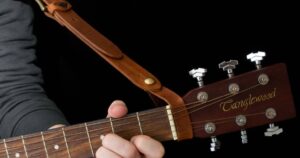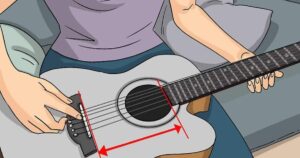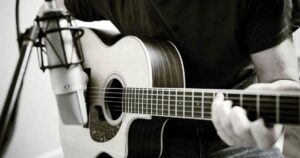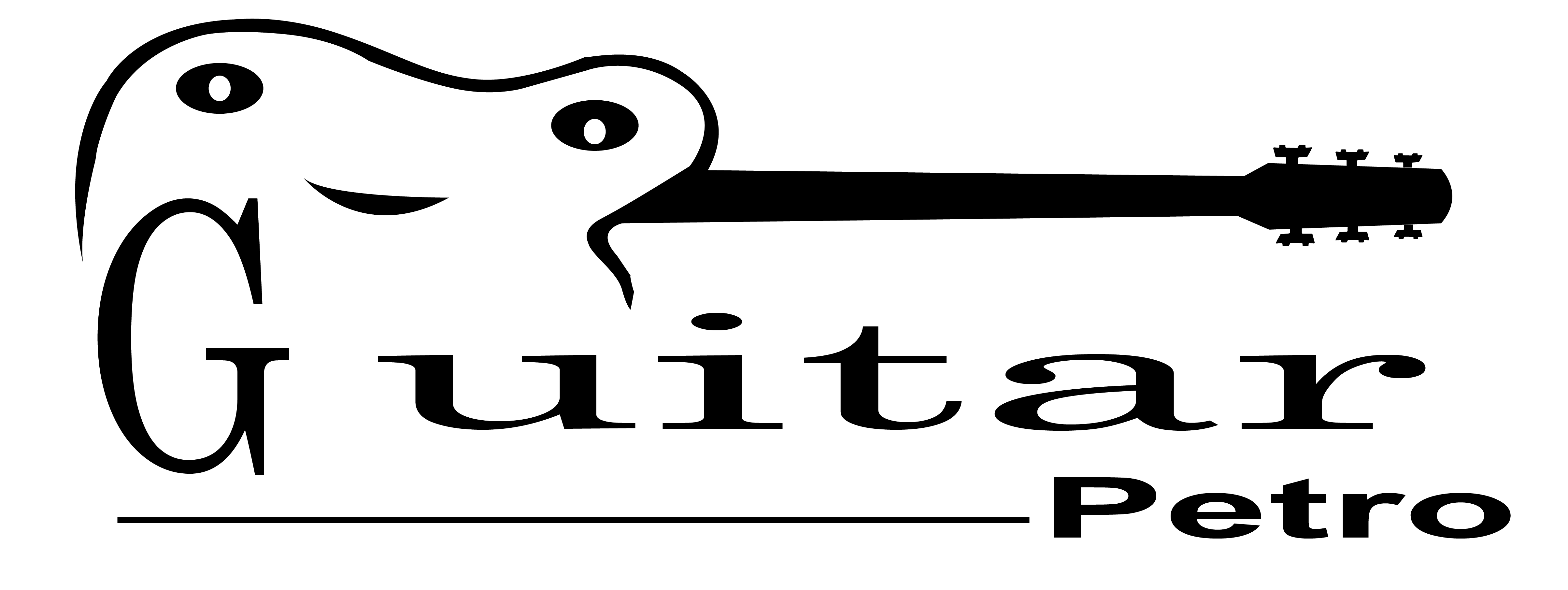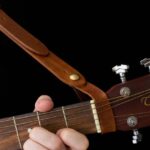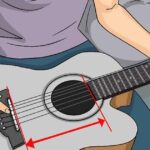Learning How to Play Hey There Delilah on Acoustic Guitar is a step-by-step guide to mastering the popular song by Plain White T’s on your acoustic guitar. It involves strumming patterns, chord progressions, and fingerpicking techniques.
Imagine captivating your friends with the sweet melody of “Hey There Delilah” on your acoustic guitar. This timeless song can be your ticket to becoming the life of the party, and the good news is, it’s easier than you think!
In this guide, we’ll break down the song into simple sections, providing clear instructions and helpful tips to make your acoustic rendition of Hey There Delilah a breeze. Get ready to impress your audience and enjoy the joy of playing this classic tune.
Choosing the Right Guitar
Choosing the right guitar is a crucial first step on your musical journey. There are two main types: acoustic and electric. Acoustic guitars have a warm, natural sound and don’t require an amplifier. They’re great for folk, country, and solo performances. On the other hand, electric guitars offer a wide range of sounds, but they need an amplifier to be heard properly. They’re perfect for rock, blues, and jazz.
When picking a guitar, consider your musical interests. If you’re into soft melodies and simplicity, go for an acoustic. If you dream of rocking out and experimenting with various sounds, an electric guitar is your choice. Try both in a store to feel which one suits you best. Remember, the right guitar can make your musical adventure more enjoyable and fulfilling.
Tuning Your Acoustic Guitar

Tuning your acoustic guitar is essential for producing beautiful, harmonious sounds. Start by using a tuner or a piano to ensure each string matches the correct pitch. The standard tuning for an acoustic guitar, from thickest to thinnest string, is E-A-D-G-B-E. You can also use tuning apps and online resources to help you get the perfect sound.
Regular tuning is vital to keep your guitar in tune and maintain its playability. Be patient and fine-tune each string until it matches the desired note. Tuning your acoustic guitar correctly will make your playing sound wonderful and allow you to enjoy your musical journey to the fullest.
Basic Chords You’ll Need
To start playing the guitar, you’ll need some basic chords. These fundamental chords form the building blocks of countless songs. Here are a few essential ones to begin with:
- C Major: Place your fingers in the C formation on the fretboard.
- G Major: A versatile chord with a pleasant sound, commonly used in various songs.
- D Major: Play this open chord for a bright, cheerful tone.
- A Minor: An easy and melancholic chord often featured in beginner songs.
- E Minor: A simple, yet emotive chord that pairs well with A minor.
Mastering these basic chords, like the one needed to Play Hey There Delilah On Acoustic Guitar, will pave the way for more complex guitar playing and enable you to perform a wide range of songs. Practice these chords to build your skills and create beautiful musi
Strumming Patterns
Strumming patterns are essential for adding rhythm and groove to your guitar playing. They determine the unique feel and character of a song. A basic strumming pattern for beginners involves downstrokes, where you strum the strings in a downward motion. This technique is straightforward and ideal for many songs, especially if you’re just starting.
As you progress, you can explore more complex strumming patterns, incorporating upstrokes and varying the timing of your strums. These patterns help you mimic the beat and emotion of the song, making your guitar playing more expressive. Strumming patterns are like the heartbeat of your music, so practicing different patterns will enhance your playing and open the door to a world of rhythmic possibilities.
Playing the Intro
Playing the intro of a song is often a captivating and recognizable part of the music. The intro sets the mood and anticipation for what’s to come. To master playing the intro on your guitar, you should start by breaking it down into smaller sections. Focus on the melody or chord progressions that make up the intro, and practice them slowly until you can play them smoothly.
It’s essential to pay attention to the timing and phrasing, as well as any specific techniques required. Additionally, listening to the original recording of the song can provide valuable insights into how the intro should sound. With patience and practice, you’ll be able to play the intro of your favorite songs on the guitar and impress your audience with your musical skills.
Learning the Verse Progression

Learning the verse progression of a song is a crucial step in playing it on the guitar. The verse is where the story unfolds and lyrics take center stage. To tackle this, you should start by identifying the chords or fingerpicking patterns used in the verse. If you’re interested in a specific song, like Hey There Delilah, you can enhance your guitar-playing experience by learning how to Play Hey There Delilah On Acoustic Guitar and applying those techniques to the verse section.
Practice these components slowly and repeatedly, paying close attention to transitions between chords or notes. Work on your timing and strumming or picking technique to match the song’s rhythm. As you gain confidence, try singing along to capture the full essence of the verse. This process allows you to weave the narrative of the song through your guitar playing, making your performance more engaging and melodious. Keep practicing, and soon you’ll master the verse progression of your favorite tunes.
Chorus and Bridge Sections
The chorus and bridge sections of a song are pivotal moments that add depth and emotion to the music. To play these sections on the guitar, you should first identify the chords, strumming patterns, or picking techniques used in these parts.
Practice transitioning between these elements, focusing on the timing and rhythm. The chorus typically repeats several times, so make sure you can play it consistently. The bridge often introduces a different mood or theme, so pay attention to the song’s dynamics and emotion.
Ultimately, mastering the chorus and bridge sections allows you to convey the heart of the song through your guitar, creating a captivating and dynamic performance. Practice, patience, and attention to detail will help you achieve this.
Putting It All Together
Putting it all together is the final step in playing a song on the guitar. After learning the intro, verse, chorus, and bridge sections, it’s time to integrate them into a cohesive performance. Start by playing through the song from beginning to end, paying attention to transitions between sections.
Focus on maintaining a consistent tempo and rhythm, so the song flows smoothly. Listen to the original recording for reference, and try to capture the song’s emotion and dynamics. As you become more comfortable, you can add your personal touch and style to make the song your own.
This is where your hard work pays off, and you can impress your audience with a complete and captivating rendition of the song. Keep practicing and refining your performance until you can play it with confidence and skill.
Tips for Smooth Transitions
Smooth transitions between chords and sections are essential for playing guitar fluently. Here are some helpful tips to achieve this:
- Practice Slowly: Start by playing the transition at a slow pace. This helps you to build muscle memory and accuracy.
- Use Common Fingers: When transitioning between chords, try to keep fingers on the same frets or strings. This reduces finger movement.
- Visualize Chord Shapes: Mentally visualize the upcoming chord shape while playing the current one to anticipate the next move.
- Lift & Shift: When moving between chords, lift your fingers off the fretboard as a group, then shift to the next shape. This minimizes the time between changes.
- Mute Unwanted Strings: Use your palm to lightly mute strings that shouldn’t ring out during transitions to prevent unwanted noise.
- Practice with a Metronome: Use a metronome to keep a steady rhythm while practicing transitions. Gradually increase the tempo as you improve.
- Song Segmentation: Break the song into small segments and practice transitioning between them. Gradually piece the segments together for a complete, smooth performance.
With consistent practice and attention to these tips, you’ll achieve smooth transitions, enhancing your guitar playing and making your music more enjoyable to listen to.
Practice and Patience

Practice and patience are the cornerstones of mastering the guitar. Whether you’re a beginner or an experienced player, dedicating time to regular practice is essential. Make a practice schedule that suits your lifestyle, setting aside time to work on chords, strumming, and songs. Start with simple exercises, gradually progressing to more challenging techniques.
It’s important to be patient with yourself. Learning any instrument takes time and persistence. Don’t get discouraged by mistakes or slow progress. Keep in mind that even the greatest guitarists started as beginners. Celebrate your small achievements along the way, and remember that with practice and patience, you’ll continually improve and enjoy the journey of becoming a skilled guitarist.
FAQ’s
Is ‘Hey There Delilah’ a good song for beginners to learn on acoustic guitar?
Yes, it’s beginner-friendly with basic chords and strumming.
What are the essential chords needed to play ‘Hey There Delilah’?
You’ll need C, G, D, and Em chords for this song.
Are there any helpful tutorials or tabs available online to learn this song?
Yes, many tutorials and tabs can guide you step by step.
Conclusion
Learning to play Hey There Delilah on the acoustic guitar is an exciting and achievable journey for beginners and seasoned players alike. By mastering the straightforward chords and strumming patterns, you’ll be well on your way to performing this beloved song. Embrace the step-by-step tutorials and tabs available online, which break down the song into manageable sections, making it easier to learn.
Remember, patience is key. As you practice, each strum and chord progression brings you closer to the heartwarming melody of Hey There Delilah. The joy of successfully playing this iconic song will not only boost your confidence but also provide a sense of musical accomplishment. Keep in mind that music is a language that anyone can learn with dedication and passion. So, pick up your acoustic guitar, follow the guides, and enjoy the process of learning and playing Hey There Delilah as you create beautiful music that resonates with both you and your audience.


